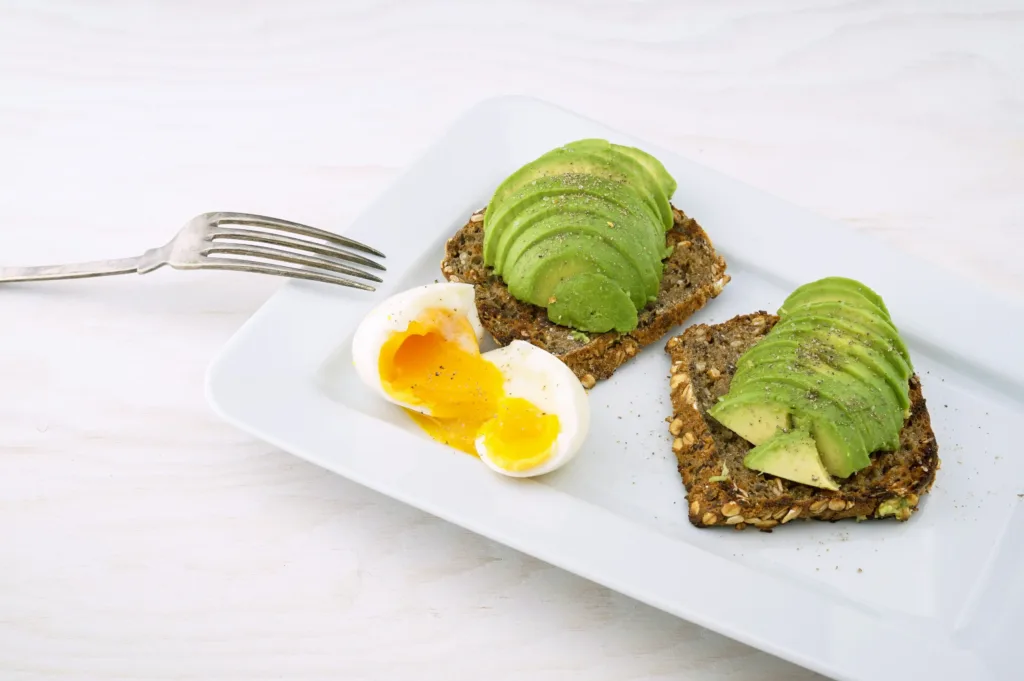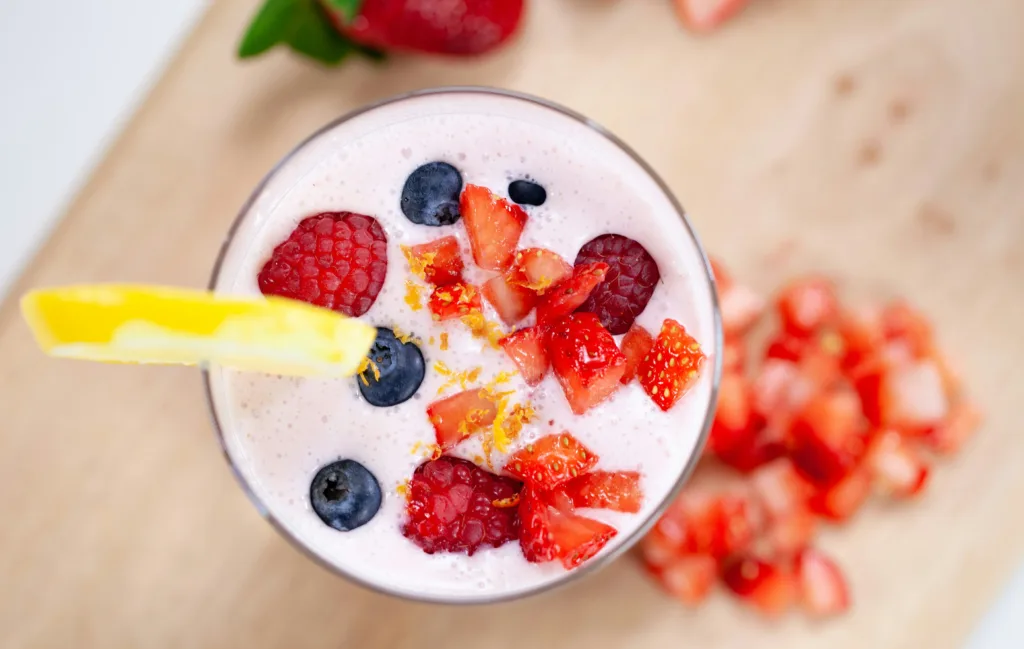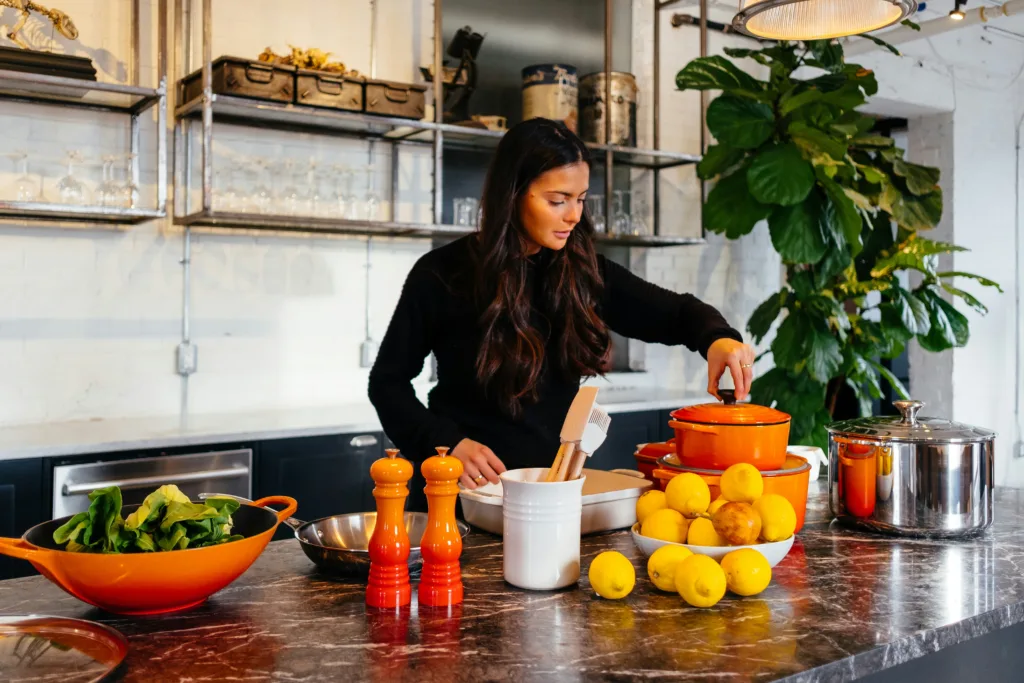Ever feel like certain foods just don’t sit right, leaving you bloated or wiped out? An elimination diet might be the key to sorting that out, by pulling back on common culprits and seeing what sticks. It’s not about starving yourself or going extreme – more like a temporary reset to tune into your body’s signals. Think of it as detective work in the kitchen, where you ditch stuff like dairy or wheat for a couple weeks, then slowly add them back to catch the offenders. I’ve tried bits of this myself during a rough patch with gut issues, and it opened my eyes to how small changes can make a real difference, though it’s smart to chat with a dietitian first to keep things balanced.
That’s where tools like the ReciMe app come in handy for keeping everything organized without the hassle. Our app lets you pull in recipes from all over – Instagram, TikTok, even notes – and stash them in one spot, making it a breeze to tweak them for your elimination needs. Plus, its smart grocery lists sort items by aisle, so you’re not wandering the store aimlessly while avoiding trigger foods. The meal planner feature is a game-changer too, helping you map out the week ahead and cut down on waste. And with options to adjust servings or convert measurements, it fits right into experimenting with portions during the reintroduction phase. Overall, ReciMe turns what could be a chaotic process into something straightforward and even fun, especially when you’re juggling daily life.



Elimination Diet Basics: Getting Started
An elimination diet can feel a bit daunting at first, but it’s really just a way to figure out which foods might be causing issues like bloating or headaches. The idea is to take out potential problem foods, see how you feel, and then slowly bring them back to pinpoint what’s causing trouble. Here’s how to get started with the process, keeping it simple and doable.
Start by picking out foods that might be triggers – think common culprits like dairy, wheat, or high FODMAP foods (like onions or garlic). A dietitian can help narrow this down if you’re unsure where to begin. Remove those foods completely for about two weeks. Keep a small notebook or use your phone to jot down what you eat and any symptoms, like stomach pain or tiredness. It doesn’t have to be fancy – just enough to spot patterns.
After the two weeks, if you’re feeling better, stick with avoiding those foods for a bit longer to lock in the progress. Then, reintroduce one food at a time, like adding dairy back for a day, and wait three days before trying another. This helps you see which food causes what reaction. For example, a glass of milk might bring back bloating, or it might be fine in small amounts. Write down portion sizes and how you feel to keep it clear.
It’s not meant to be a forever thing – cutting out too many foods long-term can make meals less balanced. The goal is to learn what works for your body so you can eat confidently. A dietitian is a great guide for this, especially to make sure you’re getting enough nutrients while avoiding triggers. With the 7-day menu in this article, you’ve got a solid starting point to test things out.

Day 1
Breakfast: Berry-Coconut Smoothie
Blend frozen mixed berries, coconut milk, and a banana until smooth. Add a tablespoon of chia seeds for a bit of texture. It’s a quick, refreshing way to kick off the morning.
Lunch: White Bean & Veggie Salad
Mix canned white beans with chopped cucumbers, tomatoes, and shredded carrots. Drizzle with olive oil and a squeeze of lemon juice. It’s crisp, light, and comes together in minutes.
Dinner: Spiced Grilled Chicken with Cauliflower “Rice” Tabbouleh & Cucumber Salad
Season chicken breasts with paprika and grill until cooked through. Pulse cauliflower into rice-like bits, then toss with chopped parsley, mint, and lemon juice for a tabbouleh-style side. Slice cucumbers and avocado, add a splash of vinegar for a fresh salad.
Snack: Pear & Apple with Pumpkin Seeds
Eat a medium pear in the morning. In the afternoon, pair a sliced apple with a small handful of pumpkin seeds for a crunchy, satisfying bite.
Day 2
Breakfast: Berry-Coconut Smoothie
Blend frozen berries, coconut milk, and a banana for a creamy smoothie. It’s the same reliable, easy breakfast as Day 1, perfect for busy mornings.
Lunch: Vegan Lettuce Wraps
Fill large lettuce leaves with mashed chickpeas, diced bell peppers, and carrots. Add a drizzle of olive oil for flavor. It’s a fresh, handheld lunch that’s simple to prep ahead.
Dinner: Roasted Vegetable & Black Bean Tacos with Cucumber Salad
Roast zucchini and bell peppers with a pinch of chili powder. Spoon into corn tortillas with black beans. Serve with a side of sliced cucumbers and avocado dressed with vinegar.
Snack: Pumpkin Seeds & Deli Turkey
Grab a small handful of pumpkin seeds for a morning snack. In the afternoon, eat 2 ounces of deli turkey for a quick protein boost.
Day 3
Breakfast: Old-Fashioned Oatmeal with Blueberries
Cook rolled oats with water until creamy. Top with fresh blueberries and a sprinkle of pumpkin seeds. It’s warm, filling, and easy on the stomach.
Lunch: Vegan Lettuce Wraps
Use lettuce leaves to wrap mashed chickpeas with diced bell peppers and carrots, finished with a splash of olive oil. It’s a repeat from Day 2, quick and fresh.
Dinner: Braised Chicken Thighs with Olive, Orange & Fennel over Quinoa
Simmer chicken thighs with sliced fennel, orange segments, and olives in a light broth. Serve over cooked quinoa for a fragrant, hearty meal.
Snack: Banana & Apple with Sunflower Butter
Eat a medium banana in the morning. For the afternoon, slice an apple and spread with 2 tablespoons of sunflower butter for a sweet, creamy snack.
Day 4
Breakfast: Old-Fashioned Oatmeal with Blueberries
Cook rolled oats in water, then top with fresh blueberries and a small handful of pumpkin seeds. It’s a simple, comforting breakfast that’s easy to make.
Lunch: Vegan Lettuce Wraps
Stuff lettuce leaves with mashed chickpeas, chopped bell peppers, and carrots, drizzled with olive oil. It’s a go-to lunch that’s fast and flavorful.
Dinner: Chickpea & Quinoa Grain Bowl
Combine cooked quinoa with roasted chickpeas, shredded kale, and diced red bell peppers. Toss with olive oil and lemon juice for a filling, veggie-packed bowl.
Snack: Pear & Pumpkin Seeds
Have a large pear in the morning. In the afternoon, munch on a small handful of pumpkin seeds for a quick, crunchy snack.
Day 5
Breakfast: Berry-Coconut Smoothie
Blend frozen mixed berries, coconut milk, and a banana until smooth. It’s a familiar, creamy smoothie that’s quick to whip up.
Lunch: Vegan Lettuce Wraps
Fill lettuce leaves with mashed chickpeas, diced carrots, and bell peppers, with a drizzle of olive oil. It’s a reliable lunch that’s easy to assemble.
Dinner: Vegan Cabbage Soup with Guacamole Chopped Salad
Simmer cabbage, carrots, and tomatoes in a vegetable broth for a light soup. Pair with a salad of chopped avocado, cucumber, and red onion with a squeeze of lime.
Snack: Apple with Pumpkin Seeds & Deli Turkey
Eat a medium apple with a small handful of pumpkin seeds in the morning. In the afternoon, have 2 ounces of deli turkey for a simple protein hit.
Day 6
Breakfast: Berry-Coconut Smoothie
Mix frozen berries, coconut milk, and a banana in a blender for a smooth, refreshing start. It’s a no-brainer breakfast that’s ready in minutes.
Lunch: Vegan Cabbage Soup with Banana
Heat up a bowl of cabbage soup with carrots and tomatoes in vegetable broth. Eat a medium banana on the side for a touch of sweetness.
Dinner: Grilled Chicken Taco Salad
Grill chicken breast and chop it over a bed of lettuce, black beans, and diced tomatoes. Add a sprinkle of chili powder and a drizzle of lime juice for a zesty salad.
Snack: Apple with Pumpkin Seeds & Pear
Pair a medium apple with a small handful of pumpkin seeds in the morning. In the afternoon, eat a large pear for a juicy, refreshing snack.
Day 7
Breakfast: Old-Fashioned Oatmeal with Blueberries
Cook rolled oats with water and top with fresh blueberries and pumpkin seeds. It’s a cozy, straightforward way to start the day.
Lunch: Vegan Cabbage Soup with Banana
Warm up a bowl of cabbage soup with carrots and tomatoes in broth. Have a medium banana on the side for a quick, sweet balance.
Dinner: Sheet-Pan Steak Fajitas
Slice flank steak and bell peppers, season with chili powder, and roast on a sheet pan. Serve in corn tortillas with a side of sliced zucchini.
Snack: Banana with Sunflower Butter & Pear
Spread 2 tablespoons of sunflower butter on a sliced banana for a morning snack. In the afternoon, eat a large pear for a simple, fresh bite.

Meal Prep and Storage Tips
Planning a week of meals for an elimination diet can feel like a lot, but a little prep goes a long way. These tips help save time, keep ingredients fresh, and avoid mix-ups with trigger foods. Here’s how to set up for success with the 7-day menu.
Batch Cook Smart
Make big batches of staples like quinoa, roasted veggies, or cabbage soup on Sunday or Monday. For example, cook enough quinoa for Days 3, 4, and 6, and store it in airtight containers in the fridge. It stays fresh for up to 5 days and reheats in a snap.
Chop Veggies Early
Dice cucumbers, bell peppers, and carrots for the week’s salads and wraps all at once. Store them in separate containers with a paper towel to soak up moisture – they’ll stay crisp for 4-5 days. Pre-cut veggies are a lifesaver for quick lunches like the vegan lettuce wraps.
Portion Snacks
Measure out pumpkin seeds or sunflower butter into small containers or bags for grab-and-go snacks. This keeps portions in check and saves time when you’re rushing out the door.
Label Everything
Elimination diets mean avoiding certain foods, so label containers clearly to prevent mix-ups. A simple “No Dairy” or “Day 5 Soup” on a piece of tape avoids confusion, especially if you’re sharing a fridge.
Freeze for Freshness
If you’re worried about leftovers going bad, freeze portions of soup or grilled chicken in single-serve containers. Defrost in the fridge the night before for Days 6 or 7. It’s a great way to keep things fresh without waste.
Keep Tools Clean
Use separate cutting boards and utensils for prepping to avoid cross-contamination with trigger foods like nuts or wheat. A quick wash with hot, soapy water between tasks keeps things safe.
These steps make the week’s menu easier to manage, so you can focus on enjoying the food and feeling good. Got a small kitchen or tight schedule? Prep just one or two meals at a time to keep it doable.
Wrapping It Up: Making the Elimination Diet Work for You
So, there you have it – a straightforward 7-day elimination diet meal plan that’s all about tuning into what your body needs without overcomplicating things. By focusing on simple, fresh ingredients and avoiding those common triggers, you might just notice a shift in how you feel day to day, whether it’s less bloating or more energy. It’s not a one-size-fits-all fix, but giving it a go with these menus, prep tips, and basics can help you build habits that stick. Remember, the real win is learning about your own sensitivities so you can tweak your eating long-term. Tools like ReciMe can keep the momentum going by organizing your adjusted recipes and plans in one spot. If something clicks or you hit a snag, chatting with a dietitian is always a smart move to personalize it further.
FAQs
How long should I stick with an elimination diet?
Most folks start with two weeks to really notice any changes, then ease into reintroducing foods one by one. It’s not meant for the long haul since cutting too much can mess with getting enough nutrients – just use it as a short-term tool to spot issues.
Can I swap out ingredients in the meal plan?
Sure, as long as you keep avoiding your trigger foods. For example, if a recipe calls for chicken and you’re going vegan, sub in tofu or more beans, but check that it still fits your calorie needs. It’s all about what works for you.
What if I suspect a food allergy instead of a sensitivity?
Allergies are more serious and involve your immune system, so if you’re dealing with hives or swelling, skip self-testing and see a doctor or allergist right away. This plan is geared toward sensitivities, like digestive stuff, not full-blown allergies.
How do I reintroduce foods after the elimination phase?
Bring back one food at a time, like adding dairy for a day, then wait three days to watch for symptoms. Keep a quick log of what you ate and how you felt – it makes it easier to connect the dots on what bothers you.
